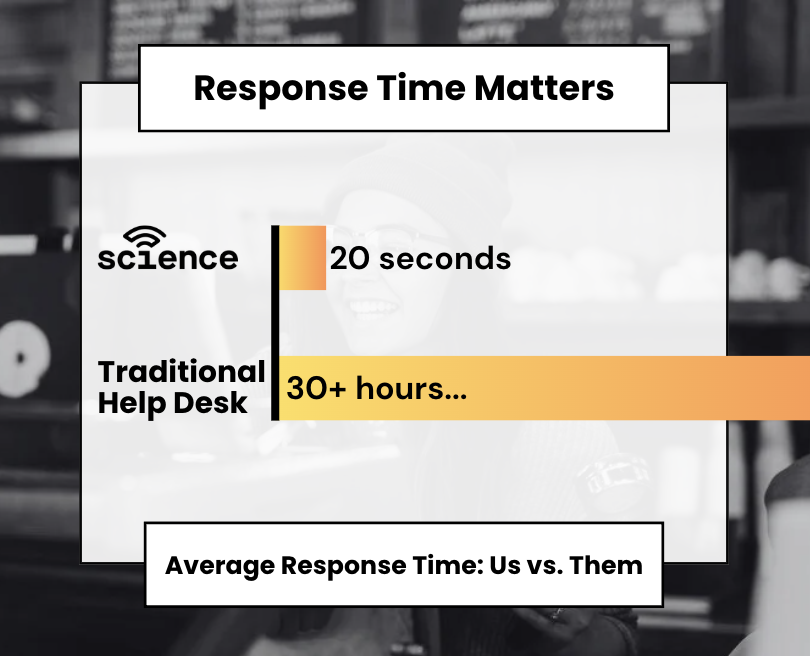Waiting On Hold is Time Theft: A Dissertation
I loathe when I have to contact other help desks because I know it can be better. Even Apple, #4 on the Fortune 500 list, had me waiting for 3 hours, and transferred me (finally) to someone who fixed my issue in ~4 minutes. I’m glad I got a resolution, but I still wasted 2 hours and 56 minutes that I won’t get back.
A 2024 AT&T study found that 70% of calls are placed on hold for more than 50% of the call, and 68% are on hold for over a minute. Meanwhile, every American, on average, wastes 31 hours a year waiting for customer service—time worth around $750 per person. Here’s why it matters (and why I care):
1. Time is a nonrenewable resource
We know this - you can’t get time back. 31 hours lost, is 31 hours gone. That amount of time per person per year isn’t just about frustration—it’s meaningless time, and halts productivity. In an era of optimization and streamlining, this feels like a major opportunity for improvement.
2 People quit—fast
A single bad experience prompts 33% of consumers to switch providers immediately. Now, assuming that same logic can apply to technology providers; every transfer, dropped call & unanswered ticket chips away at a platform’s loyalty; and partners begin to count down the days towards the end of those contracts.
3. Resolution isn't created equal
Traditional help desks rack up massive delays. The average mean time to resolution (MTTR) is over 30 hours. That’s a lot of downtime and (potentially), a lot of lost revenue. And that’s not even taking into consideration the frustration for the customers and employees.
But What Can We Dooooo? We Have Access to Better Systems, Let’s Use Them!
It doesn’t have to be this way. We know this because we, at Science On Call have built a better model. If I were to advise other technology vendors on what to focus on, here’s where I’d start:
Tier 1+ Support Models
We at Science On Call have developed a smart, fully customizable support platform that can resolve up to 85% of your most common issues—without unnecessary transfers, and no need for callbacks. Not saying every partner should build this - but there are partners out here that do it well, and are open to helping you get there (cough, it’s us, we’re here to help!)Proactive Communication
Keep people in the loop—updates via SMS or email reduce frustration and silence between steps. Trust us, if people know you’re on it, it’s a much better experience.Benchmark-Driven SLAs
Aim for the first response to be under 1 hour (ours is seconds, but hey, we’re overachievers!), and full resolution within 6 hours. This is being VERY generous with benchmarking, because I think it should be much better. I would even venture to say that if you don’t know what your average customer experience is, build empathy so you can design a better system.First Contact Resolution (FCR)
Resolve issues in the first interaction—68.8% is the current average. The goal? Beat the average.
Final Takeaways
If your help desk still runs like it’s 2005, you’re bleeding resources—both financial and emotional. Transitioning to a Tier 1+ and AI-augmented model doesn’t just cut down on wait times and andoned calls—it frees your team to focus on high-impact work (and reduces the risk of burnout).
Ask Yourself:
When was the last time you were happy waiting an hour on hold? Now imagine your team or customers doing the same.
Time to build systems that respect time.

